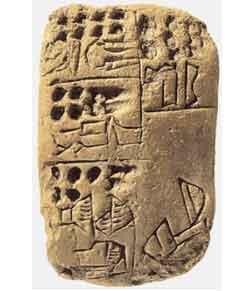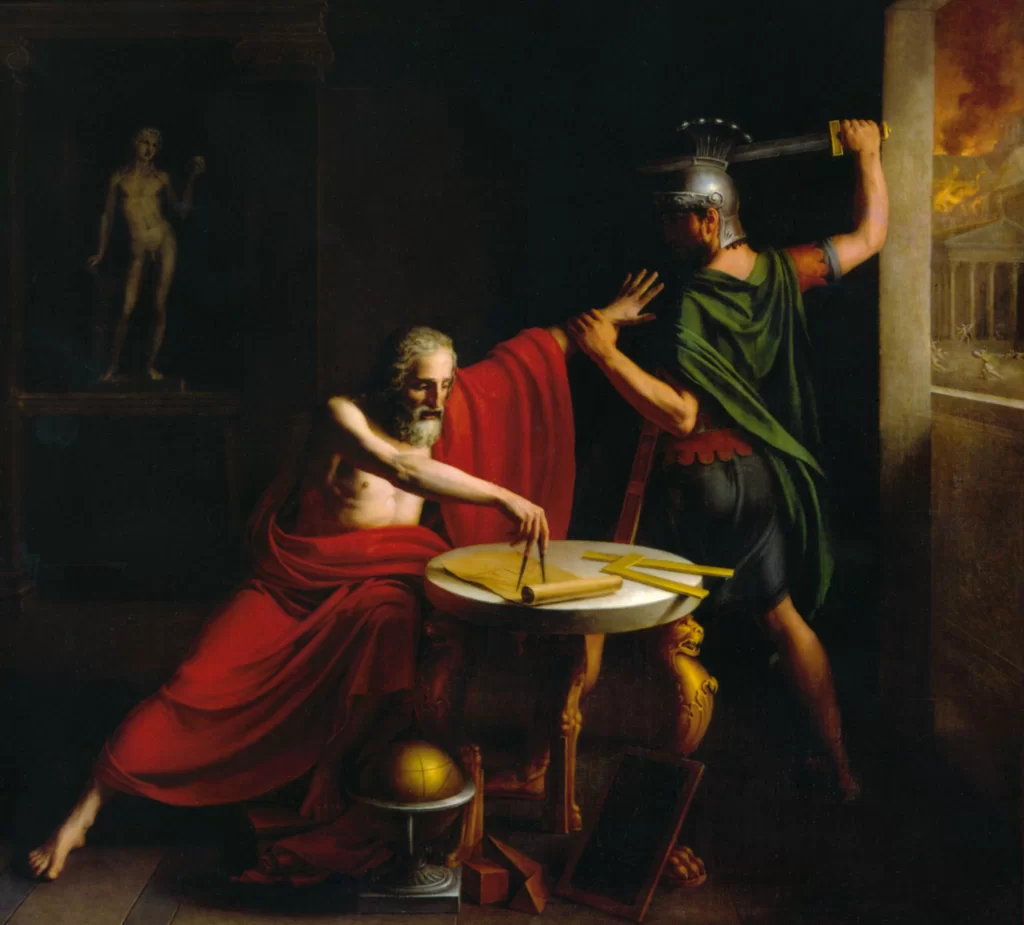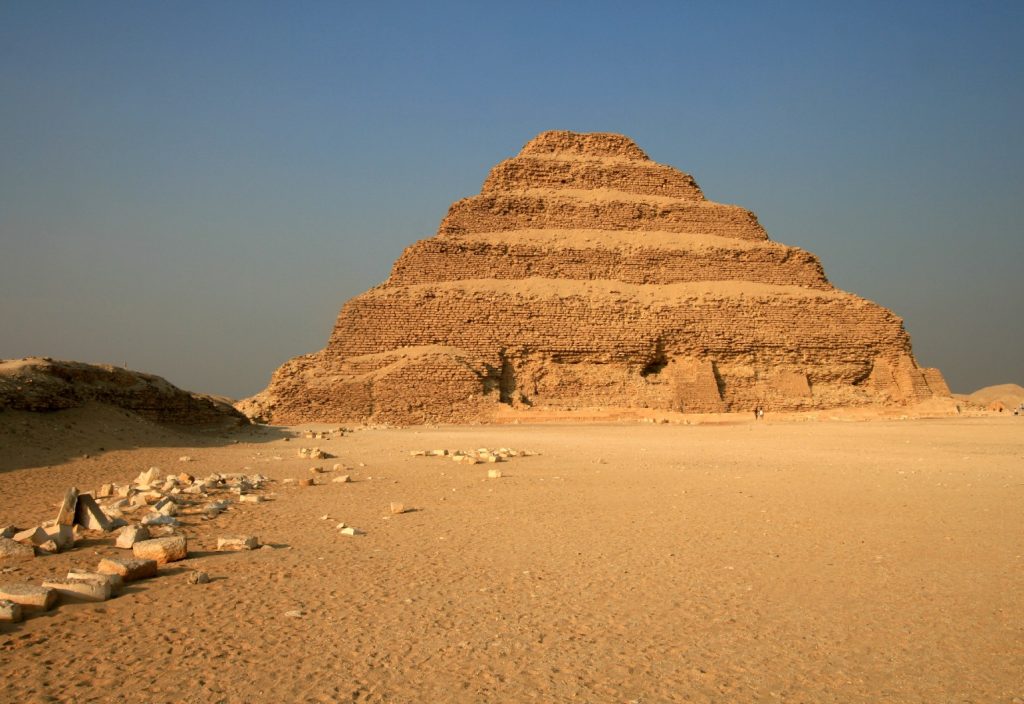Technology moves exceptionally rapidly these days, but every now and then it’s worth looking at just how far we’ve come.
It’s fascinating to see how those from centuries ago formed the foundation for modern engineering.
While not every ancient ‘engineer’ would stand up to our modern definition, their influence is undeniable. Without them we wouldn’t understand many of the current concepts that underpin the profession.
This is by no means an exhaustive list (there are many more who deserve to be mentioned) but as a starting point here are four ancient engineers you should know about.
Imhotep — 27th century BC
The first engineer in recorded history, Imhotep is thought to have built Egyptian pharaoh Djsoer’s step pyramid in Saqqara, the earliest large-scale cut stone project.
Before Imhotep, pharaohs were buried in mastabas — flat rectangular structures built over an underground burial chamber. But because Imhotep chose to use stone, rather than the traditional mudbrick, he could build much higher structures, essentially stacking six mastabas on top of one another.
If you think imperial measurements are a headache, then spare a thought for Imhotep, who used royal cubits while constructing Djoser’s pyramid.
A cubit is an ancient unit of measurement considered to be the distance from the elbow to the middle finger. The ancient Egyptians did attempt to standardise this through cubit rods, but the rods could range from 523.5 to 529.2 mm. Not exactly precise.
Djoser’s pyramid wasn’t the only structure Imhotep designed. It’s understood he also worked on a step pyramid for Sekhemkhet, Djoser’s successor. However, Sekhemkhet’s reign was short-lived and construction was abandoned. We know of Imhotep’s involvement in the project thanks to a piece of graffito on the wall surrounding the unfinished pyramid.
Imhotep certainly wasn’t the first to build with stone, but he was the first to attempt such a grand project using the material. The design of Djoser’s step pyramid is believed to have set the stage for later pyramids, including the great pyramids of Giza.
Tapputi-Belatekallim — 1200 BC
Tapputi-Belatekallim was actually one of the world’s first chemists, but her approach to chemistry was rooted in engineering principles. Tapputi’s work, recorded in a Mesopotamian clay cuneiform, is the first known record of a chemical process.

Tapputi’s second name, ‘Belatekallim’, indicated she held a position of authority in the palace where she produced perfumes, likely for religious rituals and medicinal use.
She revolutionised perfume making by using solvents to create longer-lasting scents. Tapputi distilled alcohol for her perfume using a still, making her the first recorded person in history to do so. She also used cold enfleurage and sublimation to extract scents. These techniques have earned her the title of history’s first chemical engineer.
According to the cuneiform, Tapputi wrote a treatise on perfume making. The treatise itself has never been found, but later perfume makers reference Tapputi’s work, suggesting she was quite well-known in her field.
Tapputi didn’t work alone — the cuneiform mentioned another researcher called (–)ninu. The rest of her name is lost to time, but the suffix ‘ninu’ suggests this researcher was also a woman.
Archimedes of Syracuse — 287 BC to 212 BC
Not unlike other well-known ancient Greeks, Archimedes of Syracuse was an overachiever. He was a mathematician, physicist, astronomer, inventor and engineer. He also, maybe, popularised the term ‘Eureka!’
Well, that last point probably isn’t true.
Archimedes is most famously known for the Archimedes Principle. This states that a body completely or partially submerged in a fluid at rest is acted upon by an upward, or buoyant, force, the magnitude of which is equal to the weight of the fluid displaced by the body.
While this might be what Archimedes is most known for (even inspiring a children’s book on the topic) he also has several notable engineering discoveries to his name.
Archimedes’ screw is a device with a revolving screw-shaped blade inside a cylinder that, when rotated, draws water up through the screw. The device is still used today to pump water and sometimes coal and grain.

Archimedes is also attributed with inventing the first odometer. A standard Roman chariot wheel turned 42 times in a mile, and on the 42nd wheel rotation a marble would drop into a box. At the end of a trip the marbles would be counted to determine how far the chariot had travelled. A series of gears would track the wheel rotations and line up a hole in the marble box with the counting box to make the mechanism work.
We’re yet to even touch on Archimedes’ mathematical discoveries. He wrote nine treatises on mathematics, including On the Sphere and Cylinder, which explained how to calculate the surface area and volume of a sphere. Archimedes was so proud of this discovery he asked his tomb to be marked with a sphere inscribed in a cylinder.
Perhaps Archimedes would have made further discoveries if he hadn’t been killed during an attack on Syracuse. Allegedly his last words were, “Do not disturb my circles”.
His mathematical treatises have influenced many great mathematicians and engineers throughout history, including Galileo Galilei and René Descarte. Many of the mathematical principles we use today would not have been possible without his research.
Hero of Alexandria — 10 AD to 70 AD
Next time you have your last $2 coin eaten by a vending machine that refuses to give you a Crunchie, you can direct your complaints to Hero of Alexandria.
Hero, sometimes called Heron, was a Greco-Egyptian mathematician and engineer best known for his work on steam-powered devices, Heron’s formula to calculate the area of a triangle, and creating the first vending machine.
Unlike today’s versions that spit out sweet treats, Hero’s vending machine dispensed holy water. The way it worked was simple — a coin was dropped into the top of the machine and fell onto a pan. As the pan tilted with the weight of the coin, an attached lever would open a valve to let the holy water flow out. The valve would stay open until the coin eventually rolled off the pan and a counter weight snapped the valve shut.
Hero also constructed an aeolipile, which is considered the first recorded steam engine. His aeolipile involved heating a sealed cauldron of water. Steam from the cauldron rose through the pipes into a hollow sphere, which would rotate as the steam escaped through narrow outlet tubes.
Even though Hero thought of the aeolipile as a toy, the principle behind it is actually similar to today’s jet propulsion.
Hero’s other interest involved the movement of wind and air. He created the first wind power machine with this wind-wheel organ. He also invented an air pump that was used by the Romans to fight fires.
Much of Hero’s work was built on those who came before him, particularly Archimedes. He might have had an even greater influence on modern engineering, but not all his works have stood the test of time. Two of his nine works are preserved only in fragments.
